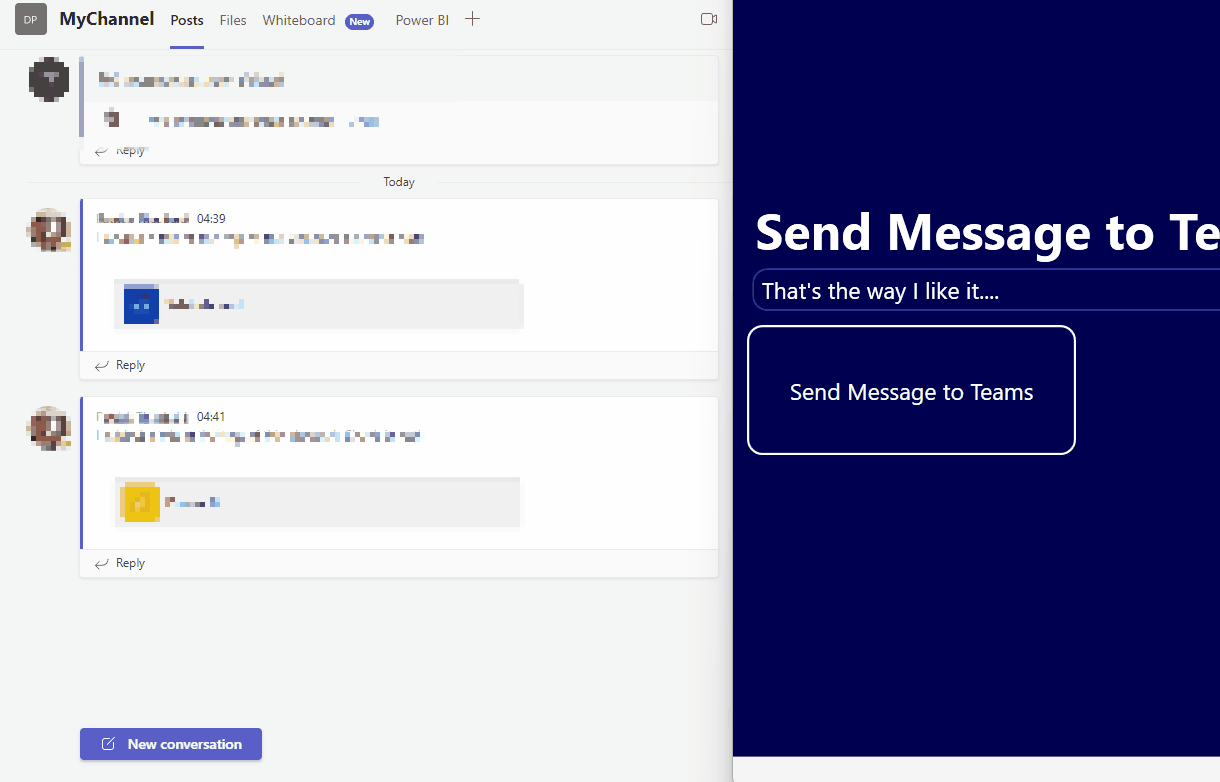Teams is one of the best communication tools for companies. This article explains how to send a Teams message from a Peakboard application using the MS Graph API.
Please make sure to read through the basics of using MS Graph API in Peakboard: MS Graph API - Understand the basis and get started
Finding the group ID and channel ID
We will later use an API call to send the message to Teams. For this API call, we will need to know the ID of the group and the ID of the channel where the message should be posted in. The easiest way to get these is to use the MS Graph Explorer.
Group ID
First, call this endpoint to get a list and metadata of all available teams and groups:
https://graph.microsoft.com/v1.0/groupsHere’s the response from the Graph Explorer. The ID is the first element of each list entry.

Channel ID
With the help of the group ID, we can build another call to list the channels of a group. If you want to do this yourself, don’t forget to replace the group ID with your own:
https://graph.microsoft.com/v1.0/teams/f2f256ca-7d65-410f-8b57-2fa0499e087a/allChannels
Build the call data source
Now let’s switch to the Peakboard side and add a User Function data source from the MS Graph extension to the board. We need to provide the Client ID and Tenant ID. We also need to get the authentication for the delegated user ready. Please don’t forget to add the ChannelMessage.Send permission.
Then, we click on Add function to add a function to this URL. As you can see, we must provide the group ID and channel ID within the URL.
https://graph.microsoft.com/v1.0/teams/f2f256ca-7d65-410f-8b57-2fa0499e087a/channels/19:3f11d999d7674dc78fbad32e242869bc@thread.tacv2/messagesThe actual message is sent in a JSON formatted body. It must look like this sample (feel free to check Microsoft’s documentation).
{
"body": {
"content": "I ain't got a lotta money but I got a lotta style."
}
}However, we want to make a dynamic message that is defined by the end user. That’s why we replace the actual message with a variable $s_message$. In the next step, we learn how to use this variable.

Build the actual call
Finally, we place a text box and a Send button on the canvas. Don’t forget to give the text box a proper name (e.g. MyMessage). Otherwise, we can’t address it in our code.

Here are the Building Blocks behind the button. The Graph function can be found on the right side and dragged onto the BB canvas. Because of the variable we placed in the JSON body of the Graph call earlier, the signature of the function can be easily accessed. Just drag and drop the text box to the message parameter of the function call. That’s it.

Here’s the final result:

